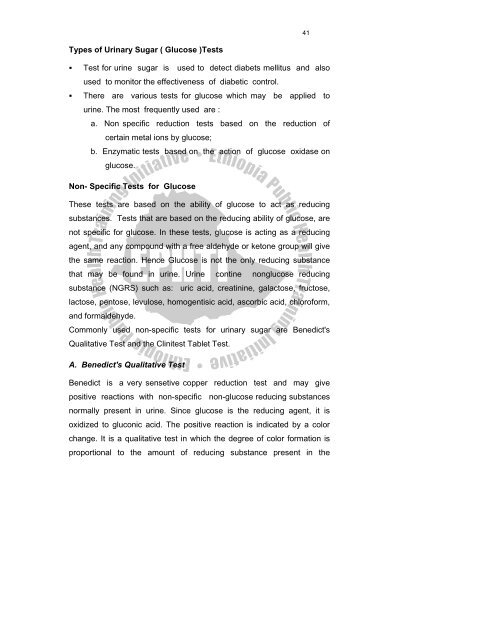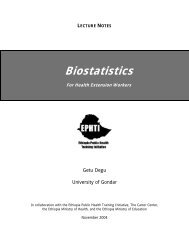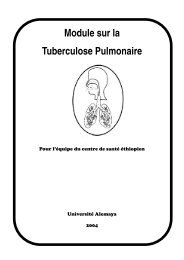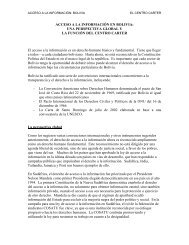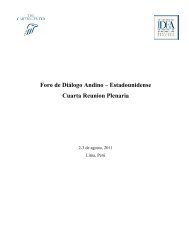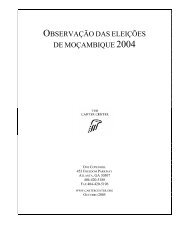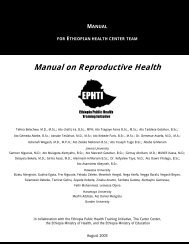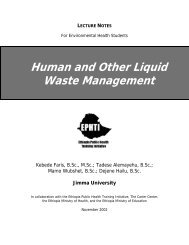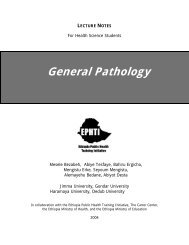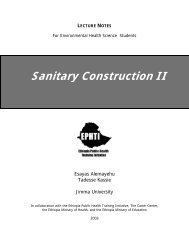Urinalysis - The Carter Center
Urinalysis - The Carter Center
Urinalysis - The Carter Center
Create successful ePaper yourself
Turn your PDF publications into a flip-book with our unique Google optimized e-Paper software.
41<br />
Types of Urinary Sugar ( Glucose )Tests<br />
• Test for urine sugar is used to detect diabets mellitus and also<br />
used to monitor the effectiveness of diabetic control.<br />
• <strong>The</strong>re are various tests for glucose which may be applied to<br />
urine. <strong>The</strong> most frequently used are :<br />
a. Non specific reduction tests based on the reduction of<br />
certain metal ions by glucose;<br />
b. Enzymatic tests based on the action of glucose oxidase on<br />
glucose.<br />
Non- Specific Tests for Glucose<br />
<strong>The</strong>se tests are based on the ability of glucose to act as reducing<br />
substances. Tests that are based on the reducing ability of glucose, are<br />
not specific for glucose. In these tests, glucose is acting as a reducing<br />
agent, and any compound with a free aldehyde or ketone group will give<br />
the same reaction. Hence Glucose is not the only reducing substance<br />
that may be found in urine. Urine contine nonglucose reducing<br />
substance (NGRS) such as: uric acid, creatinine, galactose, fructose,<br />
lactose, pentose, levulose, homogentisic acid, ascorbic acid, chloroform,<br />
and formaldehyde.<br />
Commonly used non-specific tests for urinary sugar are Benedict's<br />
Qualitative Test and the Clinitest Tablet Test.<br />
A. Benedict's Qualitative Test<br />
Benedict is a very sensetive copper reduction test and may give<br />
positive reactions with non-specific non-glucose reducing substances<br />
normally present in urine. Since glucose is the reducing agent, it is<br />
oxidized to gluconic acid. <strong>The</strong> positive reaction is indicated by a color<br />
change. It is a qualitative test in which the degree of color formation is<br />
proportional to the amount of reducing substance present in the


